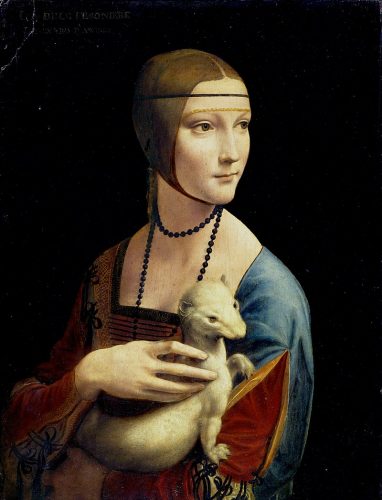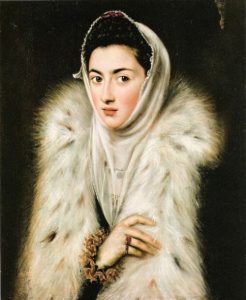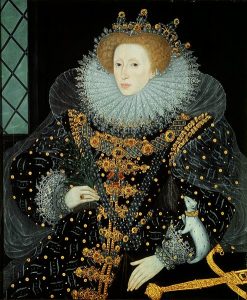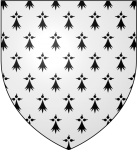
This is one of my favorite Leonardo da Vinci portraits, beating the Mona Lisa by a mile. The insouciant gaze in the lady’s eyes is priceless. One of the things that intrigues me about this portrait is what it shows about how late Medieval and Renaissance people thought about the weasel, the critter in this picture, also known as a Stoat, sometimes called an Ermine in his winter coat.
He’s a pretty muscular Ermine, isn’t he?

The Ermine signified purity, including sexual chastity, which was another reason to associate the creature with the Duke’s unmarried lover. The Order of the Ermine, founded in Naples by King Ferdinand I in 1464, emphasized chivalric honor and integrity. An earlier Order of the Ermine was founded in Brittany in 1381 and took its emblem from the coat of arms of the Duchy of Brittany. The emblem signified loyalty and heroism on behalf of Brittany.

Going back to the original Lady with an Ermine, Cecilia seems to have been an interesting woman. She was not from a noble family but was nevertheless well educated and wrote poetry and essays in Latin (like other women of her day, not for publication). Even after the Duke’s wife managed to quash their affair and she remarried, Cecilia continued to hold literary salons, and she was admired as a cultured woman during her lifetime.

“Secrets of Da Vinci’s Lady with an Ermine Finally Revealed,” in Art World, https://news.artnet.com/art-world/secrets-of-da-vincis-lady-with-an-ermine-finally-revealed-117891 September 30, 2014.
“Who Was Cecilia Gallerani?” in Art Galleries Home Galleries http://www.creval.it/gallerie_en/eventi/cecilia.htm 1998.
“1585 “Ermine” portrait by Nicholas Hilliard (Hatfield House, Hatfield UK),” in Grand Ladies http://www.gogmsite.net/the_late_farthingale_era_fr/minialbum_queen_elizabeth_o/1585_ermine_portrait_by_nic.html November 5, 2009.
